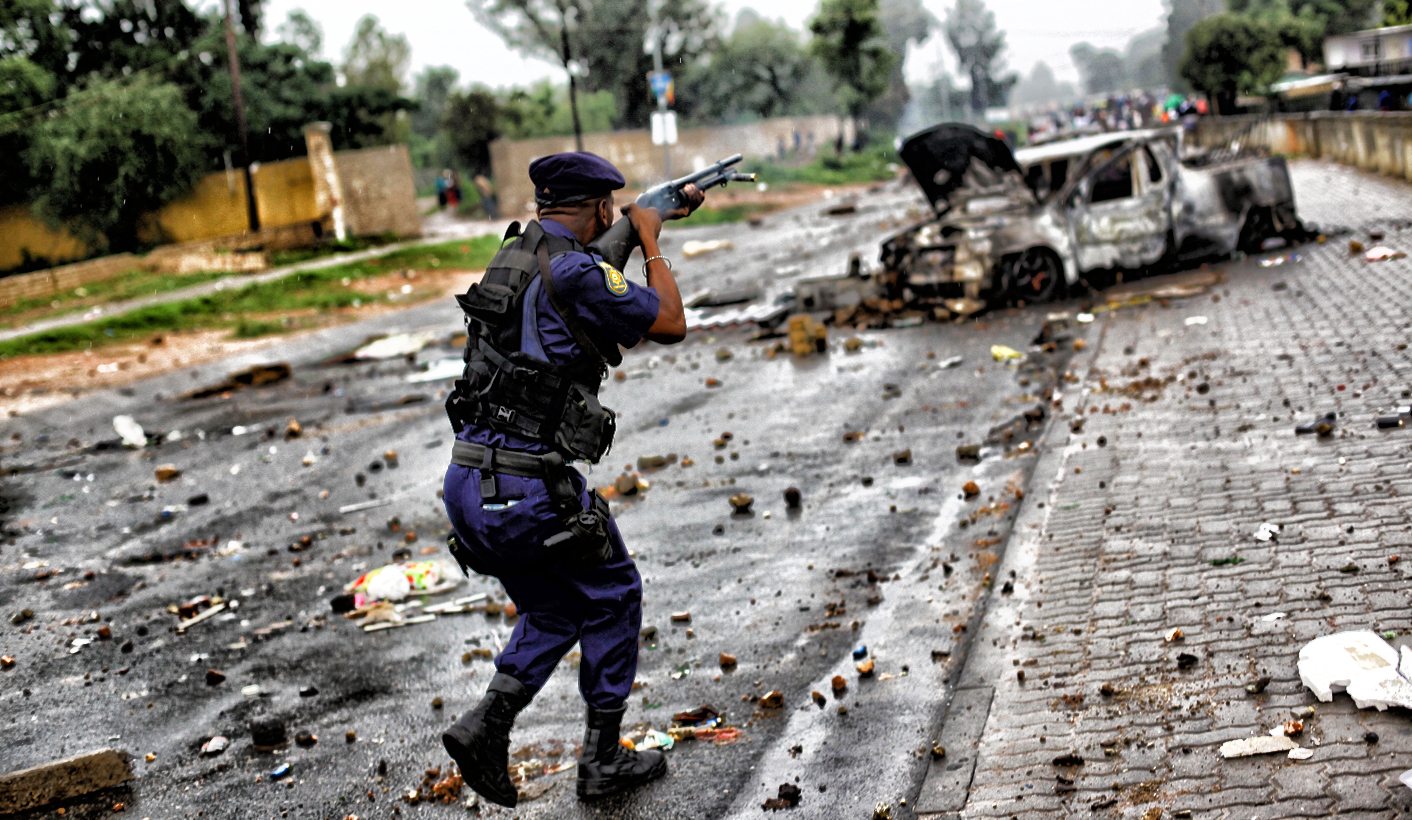June days in South Africa can be dark, cold and short. The sun rises late and sets early. Highland frosts feel their way through blades of blemished veld; mists mask roads ahead and behind. The month brings with it the year’s mid-point and shortest day; a chance to reflect on what has been, and what may lie ahead.
Five days before the equinox South Africa celebrates Youth Day. Forty years ago on 16 June 1976, thousands of school children in Soweto, Johannesburg, braved the Highveld cold to protest against the apartheid government’s decision that they be educated in a strange tongue: Afrikaans. Out on the street the students were confronted by the South African Police force (SAP). Tear gas was followed by gunfire. Young bodies fell; cameras clicked. The apartheid system was shaken irrevocably.
Youth Day takes its name from the energy and courage of those young students. But had the police not responded as they did, 16 June might simply be another winter’s day. Police work is practical and symbolic. Through interactions with police, the state communicates with its public. In 1976, police actions embodied the unjust, indefensible and violent state attitude towards black citizens.
It exposed, in ways not seen since the Sharpeville massacre on March 21, 1960, the violence through which apartheid was upheld. South Africans remember June 16, 1976 because youth took to the streets, but also because police looked them in the eye and pulled their triggers. The ripples set in motion by the youth of ‘76 had by the mid-80s crippled the economy, led to states of emergency, public “unrest”, and international sanctions against the apartheid regime.
The early ‘90s saw Nelson Mandela freed from prison and liberation movements unbanned. The South African Police repositioned itself as an objective arbiter of political tension while being accused of using undercover agents to stoke ethnic violence, at a time when the country recorded its highest ever murder rate.
In 1995, a year before the Truth and Reconciliation Commission (TRC), the police service merged with the 10 Bantustan police agencies to form a single South African Police Service (SAPS). Civilian ranks replaced military, and mustard-coloured vehicles were painted cloud-white.
Training curricula were revised to embrace human rights, and “community policing” was imported from the wealthy West. Transformation policy saw black members and women rising through the ranks rapidly. All the while, the TRC shone a light on the SAP’s torture farms, as well as on the detention camps of the liberation movements. It exposed habits of torture and murder.
In the run-up to the ‘94 elections, the African National Congress (ANC) believed, perhaps not unexpectedly, that once police were under an elected-ANC’s control, South Africans would accept their authority. They expected that citizens would accept the criminal law as legitimate and cease the daily violence. This violence had evolved as a product of oppression and as a tool of political resistance, security and punishment in preceding decades.
Instead crime and violence spread, sending politicians scrambling. In 1999 then Minister of Safety and Security Steve Tshwete declared that the government would “deal with criminals in the same way a dog deals with a bone”. With this posturing the ANC stripped law-breaking of the historical, socio-economic and political overtones through which it had explained violence under apartheid, framing “criminals” instead as bad people who threatened democracy.
In 2000 South Africans were shown precisely how a police dog “deals with a bone” when video emerged of four white officers and their dogs mauling three Mozambican men. It was a reminder that, like its violent crime, the horrors of apartheid policing were not snuffed out by elections.
In response to public anger over crime, the 2000s saw government increase police budgets at rates above inflation. Police ranks swelled to 200,000 and the rhetoric of police “service” was abandoned in favour of “force”. Military ranks were reintroduced in 2010 amid calls by leaders for police to “kill the [criminal] bastards” and “shoot to kill”. Some officers have been so emboldened that they have filmed and shared their shootings.
Even the 2012 horrors that happened at the Marikana mine, where police shot and killed 34 striking mineworkers, were
>captured on police cellphones. Scenes from that day have become as iconic as those of a dying Hector Pieterson, photographed in Soweto 40 years ago this week. Has anything changed?
The SAPS is far from a perfect organisation, but it is not dysfunctional. Many SAPS officers face extreme challenges, like policing a claimed average of 40 protests a day.
A further challenge is patrolling informal settlements without lighting or roads where murders can exceed 100 per 100,000 residents (the global average was 6.2 in 2012) and where residents fear attack from neighbours if they speak to detectives.
In a country with a 27% unemployment rate and where 60% of workers earn less than R5,000 a month, a police starting salary of R13,000 is the kind of thing dreams are made of. Of the nearly 200,000 job applications received by the SAPS in 2014/15, just 1.4% (2,827) were successful.
It is in this context that the job is something to be coveted. But this doesn’t necessarily produce professional, integrity-based policing. Rather, many officers – including the most senior – do what they must to please their managers and present a public image of competence.
For some this means doing the best job they can do, responding to people’s needs compassionately and efficiently. But for others it means




